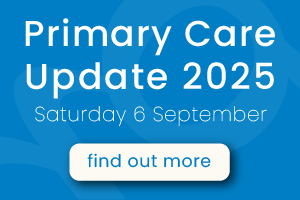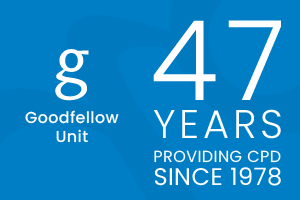
This MedCase was first published in July 2019. It was updated by Dr Hazel Fuiava, MBChB, Dip Paeds, FRNZCGP.
Patients who present with symptoms of depression are common in primary care. However, it can be difficult to distinguish short-term distress from depression, especially at the first visit.
This MedCase discusses techniques for identifying and managing patients with possible depression, with a particular focus on issues of equity.
Mr J is a 56 year old Māori man, well known to your practice, who usually brings photos of his granchildren to show you. Today he comes to see you with his wife. He seems subdued and you notice he has not brought any pictures to show you.
His longstanding back pain has gotten worse, he has stopped exercising and put on weight, and he is not sleeping well. The symptoms began around 4 weeks ago, after a particularly bad argument with his eldest son.
You complete a full systems enquiry, measure his vital signs, and examine his back. All findings are normal. He is a non-smoker, having quit 18 months ago, and he drinks 6-8 cans of beer per week. You review his medical history. His lower back pain is longstanding and he manages with PRN paracetamol, and he is obese (weight 108, height 185cm, BMI 31.5) with impaired glucose tolerance (HbA1c 48). He has no previous history of depression or anxiety.
You gently raise the topic of mood. Mr J tells you he feels matepōuri (low), and his wife agrees. He speaks very quietly and says he feels whakamā (ashamed) that he feels so bad.
You ask two screening questions to rule out depression:
- Have you felt depressed down or hopeless for all or most of the past month?
- Have you lost interest or pleasure in all or most activities over the past month?*
*NOTE: A negative answer to both questions makes depression unlikely1
Mr J answers yes to both questions, so you ask him to complete a Patient Health Questionnaire-9 (PHQ-9) depression inventory. He scores 15, which accords with your impression of mild to moderate depression. Importantly, he denies any thoughts of self harm or any suicidal thoughts.
Do you diagnose Mr J with depression at the first visit?
On one hand, it is reasonable to consider diagnosing depression. Mr J has experienced symptoms for at least 2 weeks, and his PHQ-9 score of 15 indicates moderate depression. There can be pressure to label depression to validate the patient’s symptoms, to save the patient the cost of a return visit, or to meet diagnostic criteria to access funded treatments.2
On the other hand, depression diagnosis is often inaccurate at the first visit. Primary care clinicians were 50% more likely to inaccurately diagnose depression (a false positive) than to diagnose it accurately (a true positive), in a meta-analysis.3 It can be difficult to distinguish temporary emotional distress from depression; patients can have a high PHQ-9 (or other inventory) score and not be depressed.2
Distress versus depression: How to tell the difference?
This can be difficult, especially if you have met the patient only once. Here are some tips:
- Don’t rely too heavily on depression inventory scores: these can improve substantially in the week after the consultation, regardless of the type of treatment.2
- Use time as a diagnostic test: a patient in distress is more likely to make rapid progress emotionally while a depressed patient will progress much more slowly.
- Use active listening to develop a shared understanding of the patient’s problems. Tools such as the Work/Love/Play questionnaire can be useful to understand the patient’s context.
Consider equity
Depression among Māori and Pacific patients is often unrecognised and under-treated in primary care, as these patients are more likely to present with somatic symptoms.
The current system doesn’t serve Māori and Pacific mental health patients well; the 2019 Government Inquiry into Mental Health and Addiction found some alarming ethnic disparities4:
- The prevalence of mental distress is almost 50% higher among Māori than non-Māori, but Māori are 30% more likely than other ethnic groups to have their mental illness undiagnosed.
- Māori are more likely to be admitted to hospital, to be readmitted after discharge, to be secluded during admission, and to receive compulsory treatment for mental health conditions.
- Pacific people have higher rates of mental distress than the general population, but are less likely to receive treatment.
Your impression is that Mr J is distressed, given that he has no prior history of depression and this episode seems to have been triggered by a family conflict.
However, you don’t want to miss an evolving depression.
How do you manage Mr J?
Empathic listening
Many patients experience rapid relief from symptoms after simply talking with a clinician, which can be therapeutic in itself; Dr Michael Balint calls this effect “the doctor as the drug”.2
Time taken to build a trusting therapeutic relationship (whānaungatanga) with a Māori patient can improve the outcome, regardless of the mode of treatment.
Active follow-up
Active follow-up is critical. Patients with true depression are more likely to feel hopeless and give up. Arrange review within one week of the first consultation, either in person or by phone or email with the GP or nurse.2
A nurse follow-up phone call is a powerful intervention that can improve depression symptoms (NNT = 5 at 6 months).5
Non-drug therapies
These are first line therapy for all mental distress or depression, regardless of severity. The intensity of therapy should mirror the intensity of symptoms. Therapies to consider include:
- Reducing intake of alcohol and other drugs. Screen for harmful drinking if required using the AUDIT alcohol use screening tool.
- Sleep hygiene.
- Cognitive behavioural therapy (CBT), either individually with a therapist (privately or via your PHO) or via an online self-help programme (see Just a Thought or Beating the Blues).
- Behavioural activation e.g. resuming social activities, increasing exercise.
- Mindfulness or other techniques to quiet the mind (See the CALM website or MIndfulness Works for links to mindfulness websites and apps).
- Problem solving therapy.
|
Targeted approaches for Māori or Pacific patients:
|
Drug therapies: Antidepressants
The benefits of antidepressants are greatest for patients with severe depression and drug therapy is first-line for these patients, in addition to the non-drug therapies described above.2,6
However, the evidence for antidepressants is less compelling for patients with mild to moderate symptoms. There is a substantial placebo response and patients may incorrectly attribute an improvement in their symptoms to the drug, especially if they improve quickly. This medicalises their suffering and can create an expectation of drug treatment the next time they experience distress.2
The NICE guidelines6 and the World Organisation of Family Doctors (WONCA)2 suggest using non-drug therapies first for mild to moderate depression or persistent sub-threshold symptoms. An antidepressant should be considered if symptoms persist after a trial of non-drug therapies or if there is a long history (at least 2 years) of sub-threshold symptoms.7
In practice, agreeing a non-drug treatment plan with a patient who has a short duration of mild or moderate depression symptoms can prove challenging, especially if the patient has a preconceived belief in the benefit of antidepressant therapy.
In this setting, primary care clinicians can face considerable pressure to prescribe at the first visit, possibly believing they risk withholding an effective treatment.
Patients may also declare that they have tried non-drug strategies and found them ineffective (though they may not have not given these activities a fair trial). There is no single right way to manage this situation, and the decision should be individualised based on the patient’s symptoms, preferences, and understanding of the value of drug therapy. Two patients with the same moderately severe PHQ-9 score may be treated differently based on their history.
Safe prescribing of SSRIs
If an antidepressant is appropriate, selective serotonin reuptake inhibitors (SSRIs) are the preferred first-line agents. Here are some tips for safe prescribing of SSRIs:
- Suicidal thoughts may increase during the first 2-4 weeks of treatment with any SSRI, and the risk is highest in patients aged <25 years. Ask patients to report these symptoms promptly and make a safety plan, ensuring the patient has someone to contact at any time if they feel suicidal.6
- Sexual dysfunction occurs in around 30% of people taking SSRIs. Warn patients before starting treatment; try switching to another SSRI if it occurs.6
- Hyponatraemia is rare but more likely in older patients,6 usually within the first 4 weeks of treatment. For high risk patients, check their sodium at baseline, after 2 weeks, then after 3 months of treatment.7
- Serotonin syndrome is rare but potentially life-threatening. Be cautious if there is concomitant use of other serotonergic drugs, such as tramadol, triptans or other antidepressants including St John’s wort. Look for clonus, agitation and shivering; seek secondary care advice if it is suspected.6
More tips for safe prescribing are included in this bpacnz article (2021): The role of medicines in the management of depression in primary care.
Back to Mr J: What do you do now?
You discuss a treatment strategy including ideas to improve diet and sleep, and getting regular exercise.
Together you look at the depression.org.nz website. Mr J is keen to try the Just a Thought online CBT course on depression. He would also like to talk with a therapist face to face, so you show him how to find a local kaupapa Māori mental health support service.
You agree not to start an antidepressant at this visit, but plan to review his symptoms over the coming weeks and start one if necessary.
Your practice nurse phones Mr J three days later. He has been for a walk, and is going well with the online course. He has an appointment with a counsellor early next week.
You book a follow-up appointment in one week and ask Mr J to contact you in the meantime if his symptoms get worse.
When you meet again, nearly 2 weeks after the first visit, Mr J is feeling much better. His PHQ-9 score is 8. You ask what is working for him, and he tells you that regular exercise is helpful and the counsellor is helping with his family conflict situation.
He declines your offer of a follow-up appointment but knows he can contact you if he feels his symptoms are getting worse. You note that he has brought his photographs to show you to this appointment.
Practice points
- Be aware of ethnic disparities in mental health diagnosis and treatment: Māori and Pacific patients suffer more mental distress but are underdiagnosed and undertreated in primary care.
- Ensure active follow-up to ensure early recognition of a mood disorder and support patients completing self-help programmes.
- Non-drug therapies are first line treatment for any mental distress.
- The majority of patients with distress or mild/moderate depression symptoms will improve without medication even when they have high baseline depression inventory scores; be aware that medicalising distress can create worse outcomes over time.
This MedCase was created in 2019 by Dr Vicki Mount, MBChB DipPaeds, and reviewed by Dr David Codyre, Clinical Lead Mental Health/Consultant Psychiatrist, Tamaki Health.
References
Supported by
Recognition of Learning Activities
Don't forget to log your time with The Royal New Zealand College of General Practitioners portal for recognition of learning activities.



